White Sox Minor League Baseball 101 – A primer
We dig deep into players and performances all over the White Sox minor league system – it’s what we do at FutureSox. Our writers have a strong handle on how that world works, but sometimes our readers may not understand the intricacies of how the system is set up. And if we make leaps straight into the weeds without providing the right context and high level view, then that’s our mistake.
One of our readers suggested we write a high-level, Farm System 101 type article to provide that information. Something akin to an FAQ for “how it works” on the White Sox farm. So here is a 30,000 foot view of the minors, both general and White Sox-specific. Hopefully this primer will be helpful for some of you.
1. Acquisition
The Amateur Draft
At present, there are two drafts in Major League Baseball. The Rule 4 Amateur Player Draft is the “big” one, occurring every June. As the name indicates, teams can select prospects who have not played professional baseball. There are rules around who is eligible. Generally those drafted are prep (finished, finishing High School or in the rare case, a player with a GED), 4-year colleges (generally after being there three years minimum), or junior colleges (eligible any year).
The Rule 4 Draft starts with a baseline of 40 rounds, with each team getting one pick at the same slot in each round. The slot is dictated by previous year’s final Win-Loss record, with the worst team getting the first pick of each round, and so on until the best team by that measure gets the last pick in each round.
From that baseline there are some additions and changes. There are supplemental rounds, after rounds 1 and 2, that contain picks given to teams that lose eligible free agents from their major league rosters. The team signing the major league free agent gives up their 1st or 2nd round pick (depending on the slot of that pick) to the club losing that player, and can lose the next round pick as well if they sign another free agent. Without getting into the deep intricacies, you end up with a set of picks – a few to a lot – that are made between rounds one and two, and between rounds two and three, giving some teams extra picks. These are sometimes referred to as compensatory or “Comp” picks.
There are also Competitive Balance picks. Reducing a convoluted concept to the simple, a few teams that are on the bottom rungs of MLB in terms of revenue and/or market size are given an extra draft pick. These picks are also interstitial between rounds 1/2 and 2/3. One unique aspect of these picks however, is that they are the only draft picks that can be traded. Unlike other sports, no other draft picks can be traded in MLB.
The Rule 5 Draft
There is a second annual draft, much smaller in scope and impact – the Rule 5 draft, which occurs each December at the end of the Winter Meetings. It has two phases – the major league phase, and the minor league phase (the latter is split further into AAA and AA portions).
In order to keep teams from “hoarding” talent in the minor leagues and not giving players a fair shot at the majors, teams must add minor leaguers to their 40-man extended MLB roster to retain control over that player. This must be done for players who have passed either 4 or 5 previous drafts (in other words, played 4 or 5 seasons, usually). For players drafted at age 19 and older it is 4 years, for those 18 and younger it is 5 years. Players meeting those criteria that are not “protected” on the 40-man roster, become exposed to the MLB phase of the Rule 5 draft and can be selected by other teams.
Further, teams have a larger, unpublished roster called the “Reserve List“, which protects players from the Minor League phase of the Rule 5. It is rare for significant prospects to not be protected on the reserve list at least.
Teams are given picks in reverse order of previous season W-L record, just like with the Rule 4 draft. The number of rounds in each phase is not limited, though for practical purposes it rarely goes beyond three rounds. This is because if a team selects a player in this draft and pays the $50,000 fee to the originating team, that player must be on the selecting team’s 25-man active roster for the duration of the season, or else the originating team can “buy” them back for $25,000 if they choose. Given that players need to stay on the roster for the entirety of the season for the drafting team to retain control, the players that are typically targeted are relief pitchers and outfielders with athletic ability.
In the minor league phase, players drafted do not need to be on the 25- or 40-man rosters of the selecting teams, and the purchasing fee is lower.
International Free Agency Period
Players who come from countries outside the US and Canada are not part of the Amateur Draft. Those who come from international locales and are 23 years old or younger are part of the International Amateur signing rules for free agents. This process does have similarities to the domestic draft: teams are assigned bonus pools to work within or risk various penalties, and players become eligible to be selected in annually delineated segments beginning each July 2nd. But that’s where the similarities end.
Teams can sign whomever they want among those who have turned 16 by or just after July 2nd on any given year – there is no draft. That July 2nd date is when the signings become official, though in reality, most players are given handshake deals well before then. The world around evaluating and cornering 14 and 15-year olds, mostly in Latin America, is more than a little shady. Still, the international free agency period is a big talent pipeline for all teams.
On a White Sox-specific note, in 2007 the team’s Director of International Scouting, Dave Wilder, and some of his team members were charged (and later convicted) on a series of financial indiscretions that included “skimming” bonus monies for their own gains. After he and some of his cohorts were taken out of the picture, the talent pipeline slowed to a trickle. The nearly complete inability to bring in talent via this important path for about four seasons put a serious dent in the team’s ability to generate prospects. In 2011, Marco Paddy was brought in (from Toronto) to oversee the resurrection of the team’s Latin American recruiting operations, and this area is now becoming a strength again.
Domestic Free Agents
Every year, the White Sox (and every other team) will sign a few undrafted U.S. free agents that have not had prior MiLB experience. Some come from college or even high school and simply went undrafted, others come from independent leagues. Most are not significant prospects, as evidenced by the fact that very few domestic UDFA signees ever reach the majors. The last one to do so for the White Sox was RHP Ehren Wassermann in 2007, who improbably was signed from an open tryout before making it all the way.
Of course, the other type of free agent is the one who has already played affiliated minor league (or even major league) ball. They may have been released or gained free agency, and are signed by another club just like the amateur free agents. Often these players (the ones signed for minor league purposes, not the big ticket players headed straight to MLB) are signed for organizational depth, though on rare occasion they do end up seeing time with the major league club like we saw with Jose Quintana who was released by the Yankees in 2011.
2. The Affiliates
Across Baseball
Most MLB clubs have six affiliates in the United States, and at least one club in Latin America, that make up their “farm” system. Full season ball is consistent across all 30 teams – they all have one team at each of the AAA, AA, A+ (a.k.a. High-A) and A-ball (Low-A) levels. Each level has two or three leagues the teams play within. They generally run from early April (a few days after MLB starts) through early September, and then all of them have a brief postseason playoff.
Then there are the short season, rookie and developmental leagues, and here there is some differentiation in the way the MLB teams build the ladder. All teams have at least one team in a non-complex rookie league, but can have two or three. Some farms have a team in a “Short Season” A-Ball league, which function as advanced rookie league teams. Some also have more than one team in Latin America – which can be an extra Dominican Summer League (DSL) team, and formerly might have included a Venezuelan Summer League team (but that league has recently closed). The short season leagues usually begin in June (after the MLB Draft), and run into September. Most teams carry either 7 or 8 total affiliates, with only those short season, rookie-level teams being different in numbers and layout.
The affiliates, in most cases, are independently owned businesses. Those businesses provide basically everything except the players, coaches, managers and on-field staff. The on-field personnel are provided by the parent club under a Player Development Contract (PDC), with all roster and on-field staff decisions being solely handled by the big league team. Financial responsibilities like salary and benefits (minimal though they are) for the uniformed staff are also the responsibility of the parent organization. PDC’s can go out one, multiple or many years, and nearly every offseason at least a few affiliate relationships play musical chairs around the country.
There are some exceptions to those typical business parameters. Teams in the AZL and GCL “complex” rookie leagues are wholly owned and managed by the parent clubs, are non-revenue generating, and play in their spring training facilities. There has also been a trend in recent years where some MLB teams have been buying some of their affiliate teams, making them effectively an operating unit of those clubs when wholly owned (there are also instances of partial ownership). The White Sox did this when they bought a majority stake in the Winston-Salem Dash in 2014.
White Sox specifically
The White Sox affiliates are:
- AAA: Charlotte Knights, International League
- AA: Birmingham Barons, Southern League
- A+: Winston-Salem Dash, Carolina League
- A: Kannapolis Intimidators, South Atlantic League
- Rk: Great Falls Voyagers, Pioneer League
- Rk: AZL White Sox (Glendale, AZ), Arizona League (a.k.a. Fire League)
- F-Rk: DSL White Sox (Boca Chica, DR), Dominican Summer League
The White Sox have just the one team in the Caribbean. As for the rookie affiliates, the two rookie league teams are not equal in treatment even though they are technically at the same “Advanced Rookie” level. The Great Falls roster is usually dominated by the more advanced rookies – college draftees, or players who have played a season in rookie ball already. The AZL club – which was preceded by the Bristol White Sox of the Appalachian League – carries the younger players, such as high school draft picks and teenaged talent from Latin America. The DSL club is exclusively populated with LatAm signees, aging anywhere in the range of 16 to 22 years old.
Sadly, the nearest affiliate clubs are nearly 600 miles away from Chicago, and the team hasn’t had an affiliate in the midwest in decades. The closest a team gets to home is when Charlotte visits Indianapolis, typically once a year. The good news is, there are a bunch of great ballparks to see games in if you happen to visit those cities. Charlotte’s BB&T Ballpark was built in 2014, and has been cited in multiple publications as the best ballpark in all of Minor League Baseball. The Birmingham Barons got their new stadium, Regions Field, the year before in 2013, and that park has won some hardware as well. The Winston-Salem Dash’s new ballpark was completed in 2012 and is more akin to a good AAA park than a High-A venue. There are murmurs around Kannapolis getting a new “downtown” ballpark, but if true, such a change is at least couple years away.
Offseason Minor League Play
There are a handful of offseason leagues that minor leaguers participate in:
- Arizona Fall League (AFL): Each MLB team selects seven or eight prospects to participate in this league which is played in October and November at various team complexes in the Phoenix area. The White Sox players are assigned to the Glendale Desert Dogs (home at Camelback Ranch), along with players from a four other teams. It is generally looked at as a showcase league of sorts, with highly considered and/or advanced prospects facing similarly tough competition. Most players have been at the AA level or above in the season prior. This league attracts scouts and executives who are typically doing their due diligence for the upcoming offseason.
- Instructional Leagues: Another fall league, this one running in September and October, could be looked at as the junior varsity version of the AFL. Prospect talent on the top end can be similar, but the players are generally on the younger side (typically having just a year or two of pro ball, if any), and every team field’s its own squad. There isn’t any official, public recording or statistics from these contests, unlike the AFL, and games are played on the back fields of the team’s spring training complexes in Arizona and Florida.
- Caribbean Winter Leagues: There are four winter leagues around the Caribbean: Dominican Republic, Venezuela, Mexico and Puerto Rico. They start play in October, running until around New Year’s. Then there are the Caribbean Series games, where they play off against each other. Most of the players on these teams are local talent unaffiliated with any MLB clubs, but a percentage of the rosters are made up of affiliated minor leaguers, some but not all being of Latin American origination. Some of the players are simply participating in their local national leagues, while others are there to get in work or showcase for better upcoming opportunities.
- Australian Baseball League: This league is in it’s second iteration, trying to get the sport truly off the ground down under. They play from October through February, and typically a dozen or so affiliated minor leaguers are sent to play in this league each season.
- Extended Spring Training: Minor leaguers with the club that are not assigned to an affiliate in early April for full seasons, participate in Extended Spring Training games. This is also a popular destination of players dealing with or recovering from injury. These are similar to Instructs, and run in April and May, ending early in June when the rookie and short season affiliates begin their seasons.
3. Contracts, Rules and Player Careers
Signing
For players taken in the “regular” amateur draft, teams have a specified period of time (about 2 months) to sign them to a contract. Teams are bound by rules around what bonus they can sign players for. Each pick in the first ten rounds of the draft is assigned a “slot” amount, and teams are given an overall amount of money they can spend based on the total of those slots. Any signing bonus in those first 10 rounds counts against the pool, as do any monies over $100,000 per player signed in rounds 11-40. Going over the pool carries penalties in the form of a sort of luxury tax on dollars above the line, and if they go far enough over (5%), they are subjected to a loss draft pick(s) and pool money for the following draft period (Although no team has yet gone over to that extent). In 2014, super agent Scott Boras and Carlos Rodon pushed the White Sox up against the 5% penalty threshold, but not to the extent where they would be stripped of any future picks.
After any negotiation, players are given a contract conditional on a medical exam, and assuming all goes well the contract is finalized. At that point, the player is now under that team’s elective “control” going forward. More on the parameters of that control later.
For free agent signings, generally the bonus pool concept does not apply. The exception is the international amateur free agent (or J2) signees, as noted earlier in this article. They are then given a medical exam and signed to a contract.
Player Control
Once a player enters into their first professional contract, the signing team has exclusive rights to their play. Players can quit any time they wish, but cannot sign with another team unless the current team releases them officially. Teams can assign their players to any level they choose, trade them and they generally control a player’s destiny in both MiLB and MLB.
However, teams maintain that control over a player for a limited period of time. As noted earlier, once a player reaches either their fourth or fifth December since signing, they become “exposed” to the Rule 5 draft unless they are placed on the team’s expanded 40-man roster. And at 6 or 7 years, they can elect to become minor league free agents and can sign with any team they wish.
Career Progression
Most prospects begin in a rookie league, and move their way up the levels over a period of years. For players who actually reach the majors, 3 or 4 years is a typical period spent in the minors before settling into MLB. Some more advanced players take less time, and in some very rare instances may even reach the majors within their draft or signing year. International signings of the professional variety, such as Jose Abreu (who had played for years in the Cuban professional league), will sometimes go straight to the majors but are really more like international transfers than prospects. On the other extreme, some guys spend a decade or more in the minors, but those players rarely reach the majors. Unlike like football or basketball, amateur baseball players virtually never skip the minors entirely.
Compensation
When amateur players are first signed, some receive large bonuses that can be in seven figures. For most players, the signing bonuses are much more modest like a few thousand bucks. For draftees taken in the first ten rounds, bonuses range from millions of dollars down to $100,000 as slot amounts. However, it has become common practice for teams to select lesser-touted college seniors with no negotiation leverage in the first ten rounds and sign them to $10,000 contracts to allow flexibility to sign “over slot” players in other rounds. For players in the lower rounds, the bonus is usually four or five digits. A few of the international amateur signees with each team each year will pull down bonuses in the hundreds of thousands or even low millions, but most get amounts below $50,000.
Once the signees reach the minors, they are subjected to pay that is so low that current and former minor leaguers are suing Major League Baseball for violating labor laws. Players are only compensated when they are in-season, and annual salaries for most players range from $3,200 to $20,000, weighted heavily on the lower end of that scale. See our article from last year for more details on the thorny issue of minor league pay.
For the few who reach the majors though, the needle points way up, thanks to union representation. Playing in just one game gets you quality health coverage for life. Being on-roster for 45 games gets you a lifetime pension starting around $30,000 a year. Minimum salary for a pre-arb player (first three years) is $507,500 per season, pro-rated for partial seasons. That number typically goes up in the following three years via the arbitration process, then finally after roughly six service years, players become major league free agents and can make stupendous stacks of cash.
Want to know right away when we publish a new article? Type your email address in the box and click the “create subscription” button. Our list is completely spam free, and you can opt out at any time.



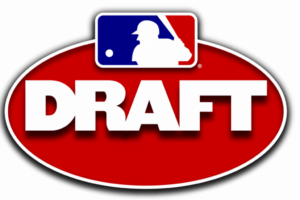
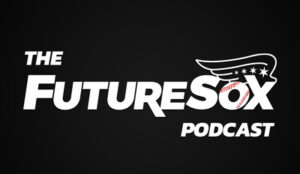
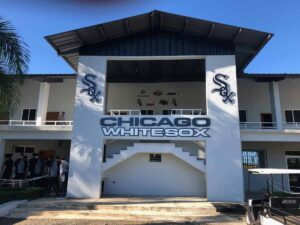
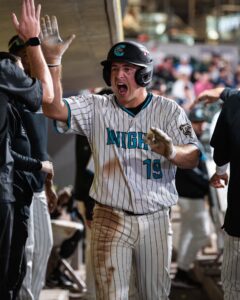
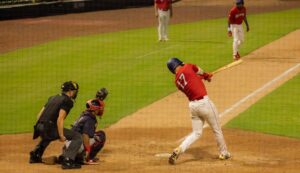
Thanks for the article. Very informative. I have never liked the international free agent process. I think you used the word ‘shady’? There should just be a draft. And my biggest question is why sign 16 yr olds? Why not wait until they are 18 since they can’t play in the states until 17(or so it seems)? Let them finish high school. As for the ‘Shady’ aspect. I do believe a lot of Latin players go for the money and once they have it, many don’t really care about working hard to make the majors. Look at some of the Dodgers players. The got Erisbel Arruebarrena, Alex Guerrero, Hector Olivera. All received a total of over 100 million dollars, played 2 years or less than took the money and ran after suspensions due to a bad attitude. It doesn’t make sense to give some poor 16 year old Dominican or Venezuelan millions of dollars. They come to America, struggle with improved competition, have trouble with home sickness and soon they think – screw this. I’m going home. I’m a millionaire, I don’t need this. I am actually keeping a log of all International signees since 2006(and a few before – remember Jackson Melian signed by the Yankees at 16 yrs old in 1996 for 1.6 Million?) I’m going to look at their statistics and rate them A-F to see how many actually succeed and how much money wasted. To sum up, I believe there should be a draft. A real draft and not one where you can just cheat big time one year and then pay a price for the next 2 years. And no more 16 year olds. They must be 18 or older.
Thanks for your comments as usual, Jim. Also, it seems you will likely be getting your wish in 2018 – an international draft.